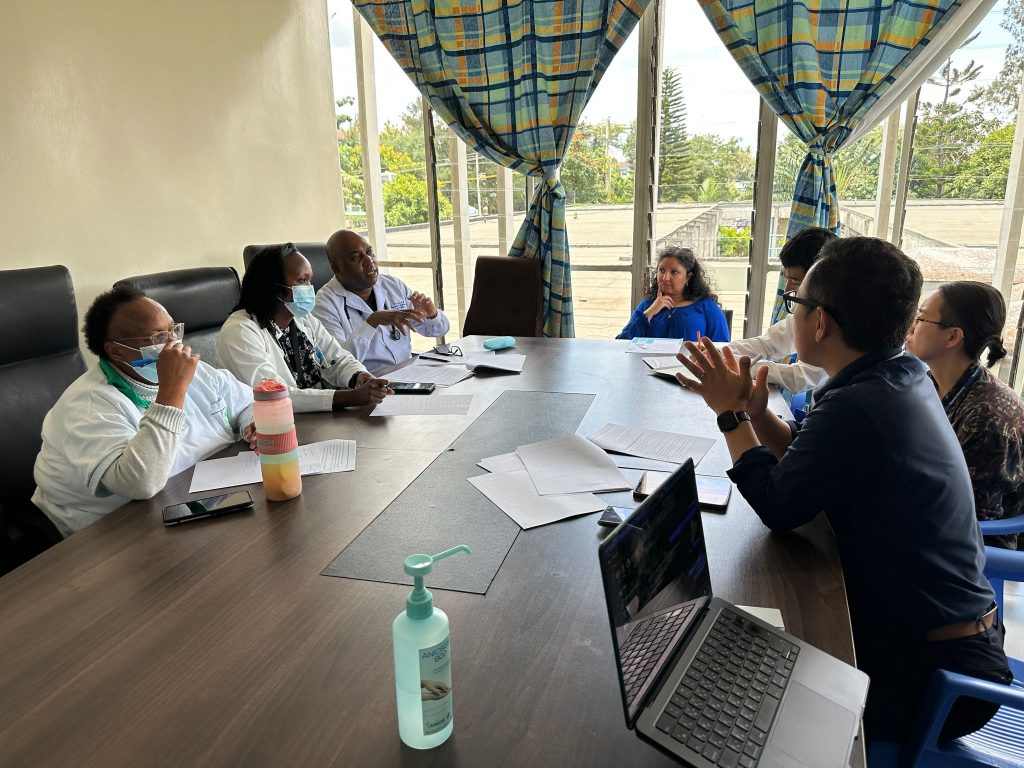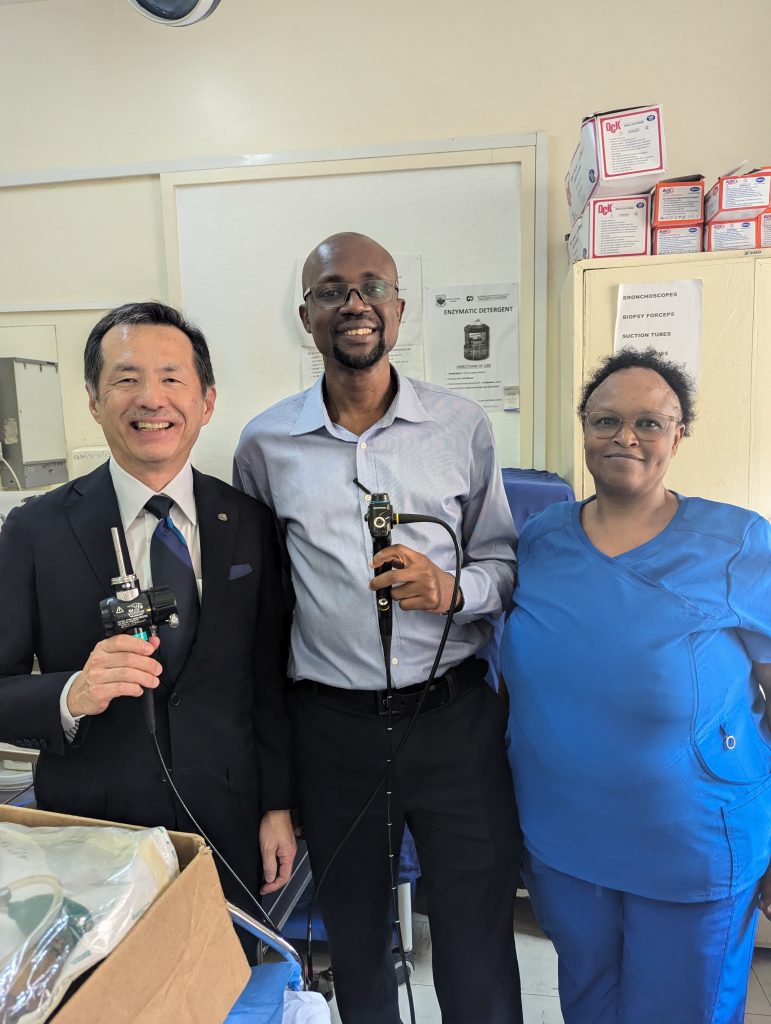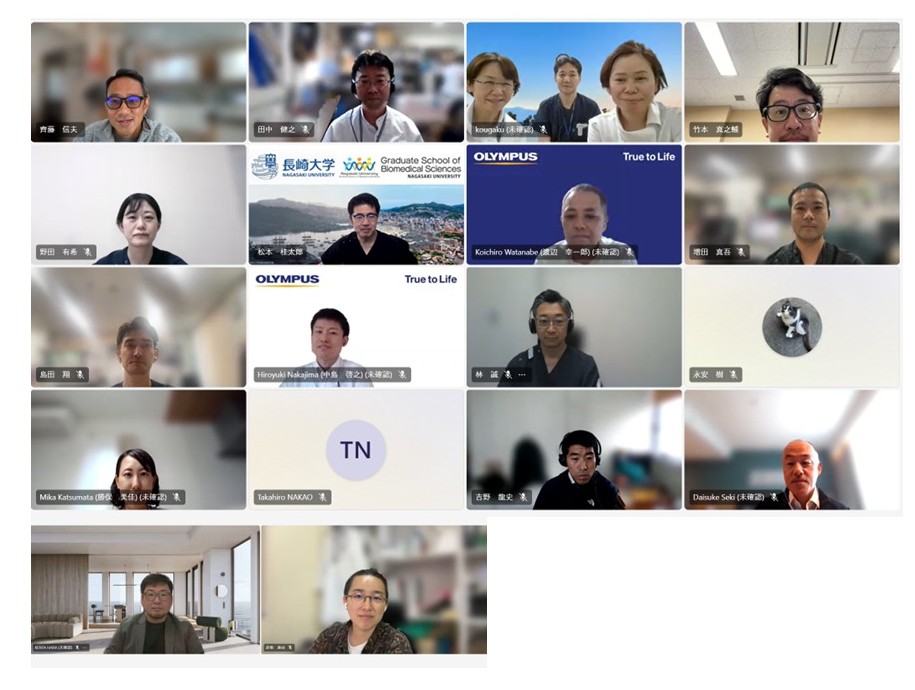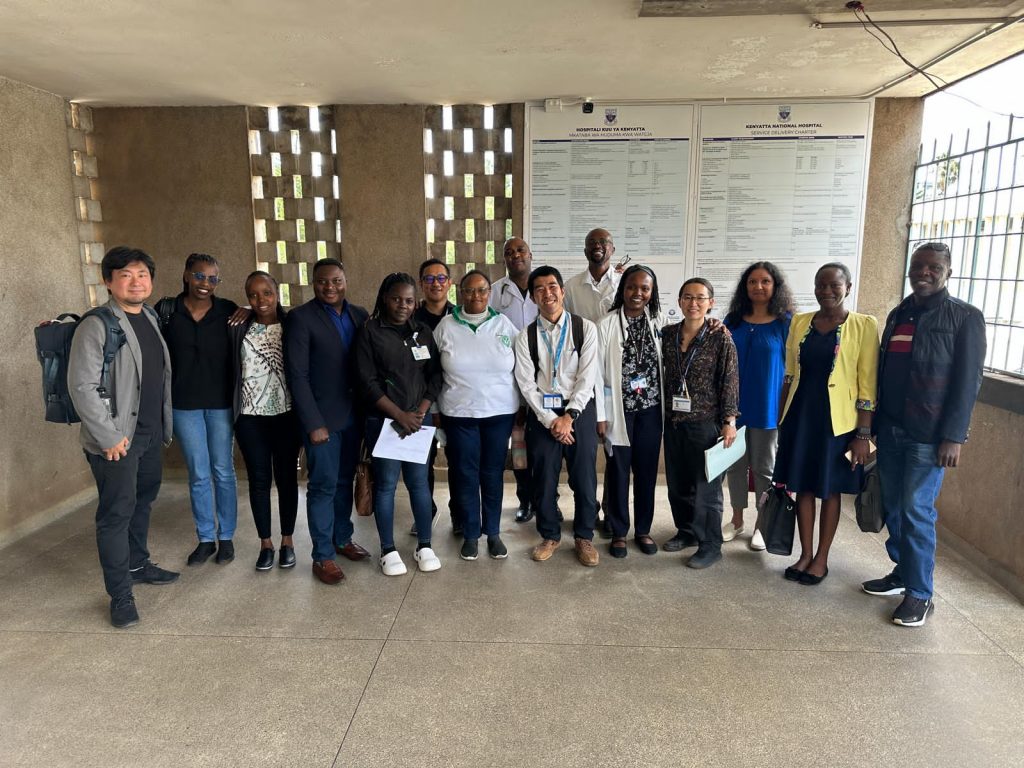Nagasaki University is pleased to announce that its project titled
“Introduction of Endobronchial Ultrasound (EBUS) and Training of Specialist Nurses and Clinical Engineers in Kenya”has been selected for the FY2025 Program to Promote the International Expansion of Medical Technologies, implemented by the Japan Institute for Health Security (JIHS).
At Kenyatta National Hospital (KNH), the largest tertiary care facility in Kenya, this project will introduce endobronchial ultrasound (EBUS)—a key technology for the diagnosis of lung cancer—and implement Training of Trainers (ToT) programs for physicians, nurses, and clinical engineers.
By adapting Japan’s advanced expertise in respiratory endoscopy, endoscopy nursing, and equipment maintenance to the local context in Kenya, the project aims to establish a sustainable, locally-led training system and contribute to the overall improvement of healthcare standards in the country.
What is this project about?
This project aims to introduce endobronchial ultrasound (EBUS)—an advanced medical technology developed in Japan—and to promote the widespread adoption of bronchoscopy in Kenya through human resource development. At the heart of this initiative is a Training of Trainers (ToT) program.
The program targets Kenyan physicians, nurses, and clinical engineers, offering comprehensive training across multiple domains:
- Practical skills in bronchoscopy procedures
- Fundamentals of endoscopy nursing
- Techniques for equipment maintenance
The ultimate goal is to establish a sustainable, locally-led training system, in which Kenyan professionals themselves serve as trainers and continue to expand education and capacity-building efforts in the country.

In addition, the project is considering the reuse of pre-owned bronchoscopes that are no longer in use in Japan due to damage or having exceeded their service life. These devices, when combined with simulators, are expected to serve as training tools in Kenya, providing a realistic environment for hands-on skill acquisition.
Why Kenya? Why now?
In Kenya, tuberculosis and HIV remain major public health challenges, but in recent years, a sharp rise in cancer cases—particularly lung cancer—has become a growing concern.Unfortunately, the healthcare system’s capacity to diagnose and treat lung cancer remains limited. One of the key issues is a lack of equipment, technical expertise, and maintenance systems. This project aims to help fill those gaps and contribute to strengthening Kenya’s medical infrastructure.
The project traces its origins back to 2024, when President Nagayasu of Nagasaki University visited the bronchoscopy unit at Kenyatta National Hospital (KNH). During that visit, malfunctioning equipment and inadequate maintenance systems were identified as pressing problems, which prompted a shared recognition of the urgent need for support.

Following this, Associate Professor Saito, Deputy Director of the Kenya Office of the Institute of Tropical Medicine at Nagasaki University, took the lead in initiating discussions with Nagasaki University Hospital.
He held individual consultations with the hospital’s Department of Respiratory Medicine, Nursing Department, and Clinical Engineering (ME) Division, carefully coordinating and refining a plan for the transfer of medical technology and development of human resources tailored to the situation in Kenya.
This collaborative effort culminated in the submission of the current project proposal.

■Who is involved in the project?
Nagasaki University
Medical doctors, nurses, and clinical engineers from Nagasaki University Hospital are participating, alongside the university’s Kenya Office of the Institute of Tropical Medicine, which leads collaboration on the ground.
Olympus Corporation
As a global leader in endoscopic technology, Olympus provides bronchoscopy equipment including EBUS, as well as technical support and guidance.
AA Health Dynamics (Kenya)
A locally based medical education company, AAHD is responsible for developing training materials and managing local training programs.
Kenyatta National Hospital (KNH)
As the largest tertiary referral hospital in Kenya, KNH plays a central role in implementing and expanding the training within the country.

What is EBUS (Endobronchial Ultrasound)?
EBUS is a groundbreaking diagnostic tool that integrates ultrasound technology into a bronchoscope.
It allows real-time imaging of lesions deep within the lungs and lymph nodes and enables safe tissue sampling (biopsy).
EBUS is essential for the early diagnosis of lung cancer and has already become a standard technique in Japan, Europe, and North America.
■About Olympus
Olympus Corporation is one of Japan’s leading manufacturers of endoscopic medical equipment.
It was the first company in the world to commercialize bronchoscopy and endobronchial ultrasound (EBUS) technology, launching a practical EBUS-TBNA system in 2004.
Since then, this high-precision diagnostic method has spread globally. Olympus currently holds approximately 70% of the global market share for endoscopy systems and is particularly trusted in the field of respiratory endoscopy.
■About Kenyatta National Hospital (KNH)
Kenyatta National Hospital (KNH), located in Nairobi, is Kenya’s largest and most advanced tertiary care hospital, with approximately 1,800 beds.
In addition to tuberculosis and HIV, the hospital is becoming a key center for cancer diagnosis and treatment, with high expectations for further development.
■What is AA Health Dynamics?
Asia Africa Health Dynamics (AAHD) is a healthcare education and training company based in Nairobi, Kenya.
AAHD provides training programs particularly in point-of-care ultrasound (POCUS) and cardiac catheterization techniques, helping to strengthen the capacity of local healthcare workers across Africa.
They also offer CPD-accredited educational programs, financial support for medical equipment, and clinic management services—contributing to the enhancement of healthcare infrastructure in the region.
■What is the Program to Promote the International Expansion of Medical Technologies?
This program is implemented by the Japan Institute for Health Security (JIHS) as a national initiative for international medical collaboration.
It aims to utilize Japan’s expertise in medical technologies, systems, and products to support human resource development and raise healthcare standards in partner countries.
Through the dispatch of experts, training programs in Japan and on-site, as well as online modules, the program provides multi-faceted support for the development of healthcare professionals and systems.
By doing so, it seeks to strengthen public health and medical infrastructure in partner countries while fostering mutual trust and international cooperation.
In the FY2025 call for proposals, a project led by Associate Professor Saito, Deputy Director of the Kenya Office of the Institute of Tropical Medicine at Nagasaki University, in collaboration with Nagasaki University Hospital, was selected.
▶ View the list of selected projects:
https://kyokuhp.jihs.go.jp/activity/open/entry2025/R7_tenkaisuisin_saitaku_ichiran.pdf
■Upcoming Schedule (Planned)
- September–October 2025: Kenyan trainees (physicians, nurses, clinical engineers) will be accepted for training in Japan (at Nagasaki University).
- November–December 2025: The Japanese team will travel to Kenya to conduct on-site training.
- From 2026 onward: A sustainable training program will be led independently by local staff at KNH, including physicians, nurses, and clinical engineers.
If successful, this project will bring a significant transformation to Kenya’s lung cancer diagnostic system.By fostering team-based care involving not only doctors but also nurses and clinical engineers, this initiative aims to build a future where more lives can be saved.
We will continue to provide updates a